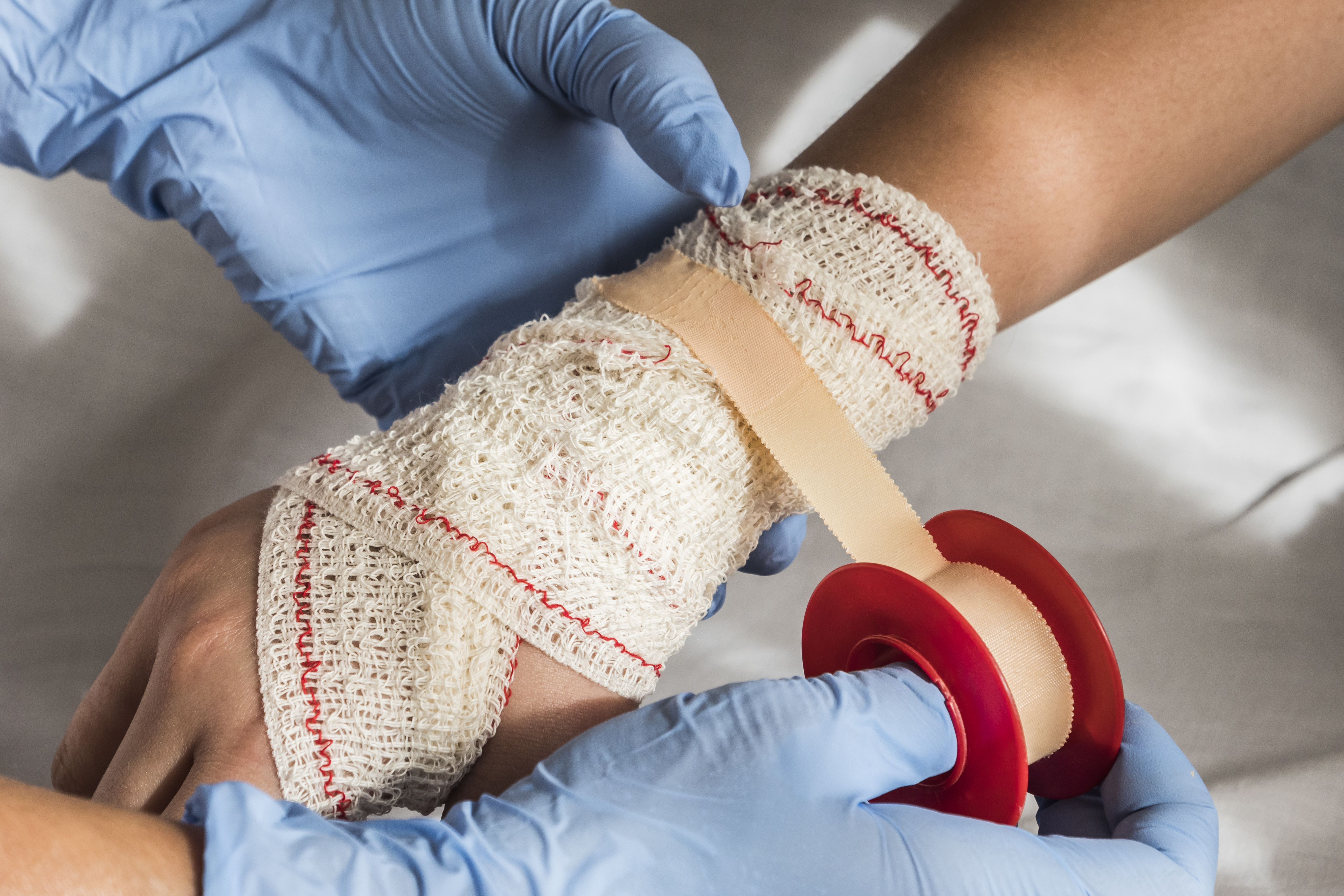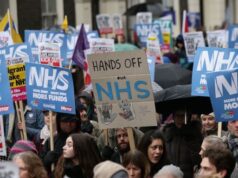“You couldn’t make it up, and I haven’t.”
A bizarre and costly disaster took place recently in Ealing’s NHS.
In an effort to do the un-doable, Ealing’s health bosses hired a private American firm called Finnamore to ‘fix’ what they claim is the overuse of hospital beds.
Here legendary researcher Colin Standfield lifts the lid on what actually happened, using his usual dry humour and focus on facts. Colin shows that the people who are now offering a billion-pound contract for our Out Of Hospital services really don’t know what they are doing.
The Ealing MCAP Debacle
What is MCAP?
Better start with a definition, or we’ll get nowhere: MCAP seems to mean Medical Care Appropriateness Protocols, expanded as ‘care planning co-ordination software to ensure patients receive care in the appropriate setting’. Sometimes it is Making Care Appropriate to Patients which, curiously, is what I thought doctors usually did.
It is a software tool designed to find the best place for patients to be, they say. It was designed by The Oak Group, now part of Finnamore Oak. This is, in turn, part of GE, the American conglomerate which, among many other wonderful things, also produces the engines for the A-10 ‘Warthog’ Close Air Support fighter jet.
The Oak website says: ‘Making Care Appropriate for Patients (MCAP) is the Oak Group’s Clinical Utilisation Review (CUR) tool’. http://www.oakgroup.com/wp-content/uploads/2015/08/Oak_Implementing.pdf
Why was MCAP needed?
Two things were going on: first, the flawed Shaping a ‘Healthier’ Future plans to close 4 A&Es in NW London and make £1 billion of savings required a massive and heroic shift of tens of thousands of patients from acute, hospital-based care and into the community – the so-called out-of-hospital (OOH) experience – and the pointy-heads were desperate to find ways of doing it. Secondly, it was ‘known’ that a high proportion of patients in A&E ‘did not need to be there’. According to the Project Initiation document*, MCAP would give the local NHS ‘The ability to identify patients in the Acute setting that could be treated elsewhere.’
The Myths
This all hung on two myths: that home was a better place to be than hospital and that there really were all those people in A&E who shouldn’t be.
The Shaping a Healthier Future Consultation Document in July 2012 said on page 4: We know that increasing the amount of care delivered closer to your home will help care to be better co-ordinated, and improve the quality of that care and its value for money. It didn’t say how they knew that or what it meant. If you are an NHS suit living in a leafy suburb with a devoted spouse, your own bed probably looks quite a good idea; less so if you are stranded alone in a high-rise and the kid next door spends all day blasting out The Best of Metallica, even if you do like Fade to Black.
I am not sure that there has ever been a proper analysis of the costs, cost savings and clinical benefits of caring for people at home; the idea that a succession of healthcare professionals will tour a neighbourhood taking bloods, checking vital signs, changing dressings, monitoring drugs and assuring patients’ well-being seems expensive. Or even a team of multi-skilled single practitioners – we are talking about thousands of earlier-than-usual discharges and other don’t-need-to-be-theres, about 99,000 by 2025. Further problems are transport, parking, lone working policies, and the carbon footprint of the number of car journeys (they will not be taking medical bags with drugs onto the buses).
There have been various numbers placed on the ‘don’t need to be there’ hospital group:
One in three people turning up at A&E have problems that were minor, and did not need the care of emergency doctors, the Health Secretary said. (Telegraph Online, 9 January 2017 at https://www.telegraph.co.uk/news/2017/01/09/live-jeremy-hunt-makes-emergency-statement-nhs/)
Around 1.5million patients taken to A&E could have been treated in the community by GPs, nurses or at walk-in centres, if there was better provision. (Mail Online, 2 March 2018, at http://www.dailymail.co.uk/news/article-5452379/A-quarter-visits-E-not-necessary.html#ixzz5C0OUkswv)
Half of the capital’s A&E attendances unnecessary, report suggests. (Health Service Journal headline, 1 June 2011, at https://www.hsj.co.uk/bolton-pct/half-of-the-capitals-aande-attendances-unnecessary-report-suggests/5030392.article)
Talking on Radio 4’s Today programme, the health secretary said that there was a need to recognise A&E was for accidents and emergencies, with GPs based in the departments seeing the 40% of A&E patients who don’t need emergency care. (9 January 2017, at http://www.pulsetoday.co.uk/news/commissioning/commissioning-topics/urgent-care/gps-in-ae-and-care-homes-can-cut-unnecessary-attendances-says-hunt/20033593.article)
‘A staggering 80% of patients [their emboldening] who visited A&E units did not actually need to be there’ (Chief Executive of NHS Wales, Dr Andrew Goodall, 7 July 2016, at http://www.nowgp.com/blog/ae-visits-wales-nhs/; also referenced at http://www.bbc.co.uk/news/av/uk-wales-36728265/nhs-wales-faces-pressure-all-year-dr-andrew-goodall-says)
‘It has been thought that up to six in ten patients attending A&E departments do not need to be there and could instead be treated at walk-in centres, minor injuries units or health centres.’ (Dr John Heyworth, President of the College of Emergency Medicine), at
But Dr Heyworth: ‘described the idea that 60 per cent of people did not need to be in A&E as a ‘fiction’.’
Whether it is 15% or 80%, it is still a myth: it is only after skilled clinical examination that the need is apparent or not – a headache could be a migraine or it could be a subdural haematoma; a rash could be a minor irritation or it might just be meningitis. I don’t think we’ll ever get to the stage where the population can safely triage itself and until somebody funds all GPs to be open 12 hours a day for 7 days a week (and finds enough GPs to go round in the first place), the obvious place to go, for safety, will be A&E.
OK, there are people who go to A&E because they have run out of aspirins, but anybody who wants to wait for 4 hours to get what a corner shop could provide probably needs some other kind of help.
MCAP at Ealing Hospital
- The Lead-Up
Volume 5 of the Shaping a Healthier Future Decision-Making Business Case (DMBC) of February 2013 said, in the Ealing Commissioning Intentions, Furthermore, to facilitate this work, we are keen that acute hospitals in NW London review the benefits of and adopt the use of MCAP decision support tool (or similar system). The system is designed to enable acute trusts to accurately assess risk and to make informed decisions about not admitting patients (in A&E) and about timely discharges.
We believe the system shows great potential and would provide a significant contribution to help the wider health economy to ensure patients are seen in the appropriate care setting. It also allows the systematic collection of data about service demand which in turn would constitute an invaluable source to inform commissioning and service development decisions.
We understand that for a decision support tool like MCAP to be effective it would need to be rolled out across all NW London hospitals. We have asked for NW London cluster support in driving this forward. In the meantime, we are keen to work with EHT [Ealing Hospital Trust] to become the pilot site for NW London. (page 133)
So it was important for the Decision Making Business Case, and Shaping a Healthier Future wanted to foist it on Ealing Hospital. In fact, the Minutes of the Ealing CCG Governing Body meeting of 22 May 2013 record: “The project is linked to CQUINs and will lead to financial penalty if not implemented by the trust.” A Freedom of Information reply in March this year said: ‘SaHF thought that this could be a major tool to deliver the acute activity reductions needed through improved care pathways. SaHF led the procurement process to appoint them and SaHF provided the funding.’
The scheme was presented by Kevin Atkin, Deputy Director Strategy Transformation Team, who had also sat on the 7-person panel that approved the winning Finnamore Oak bid.
By coincidence, the following year he was a Director of Finnamore and the year after that he was seconded back to NHS NWL under a GE Healthcare Finnamore contract valued at £49,000.
The decision was made – MCAP was coming to Ealing.
- Procurement
The tender was advertised on 7 March 2013 through a Southampton-based outfit, Solent Supplies (‘our procurement specialists’) for a mere 10 days – I have found no-one who can believe such a short time frame for a quarter-million pound contract, but it was ‘the recommended 10 working days’. When I asked who recommended it, the response to a Freedom of Information request was: “This is not documented”. Very handy!
Surprisingly, there was only one bid, from Finnamore, and it was approved on 4 April. Perhaps all the others were delayed in the post. The CCG Governing Body was being asked to rubber-stamp this deal in May.
Nobody bothered to check three important things: ONE: Did the cost figures in the Bid document add up (they didn’t). TWO: Did the software match the NHS computer systems (it didn’t). THREE: How much time would be spent by front-line nursing staff just to gather the data on their hand-held computers? Who would have known? Well, I could have told them: taking the 8,000 patients attending Ealing A&E each month (I used the 8,265 in July, when I expected the scheme had started) and allowing, as Mr Atkin said, 3 to 4 minutes for each, you arrive at a total of between 413 and 551 hours. 10 to 14 working weeks. Just to put the data in. That’s somewhere between £7,500 and £10,000 a month.
But it was a done deal.
- Implementation
Here’s where it gets hazy. It looks like the start was delayed: it was meant to ‘go live’ on 12 August but that was put back to w/c 26 August; that slipped as well, owing to the planned physical demographic link (no, me neither) taking longer than estimated. A supported soft GO LIVE in w/c 16 September was mooted in the 4th MCAP Steering Committee notes of 2 September.
Ten of the twenty Action Points in those Minutes were flagged as ‘show stoppers’ if they are not resolved by GO LIVE. There is no record of when GO LIVE happened, soft or otherwise, but by December there were still problems with training, staffing, MCAP process flow and data. The Notes from a 10 December meeting include lines such as: The ED department continues to have issues with unfilled nursing shifts…, organising extra nursing shifts may prove to be difficult…, Users are complaining…, A crucial bit of information that is missing is the report on ‘service intensity’…
A plan to implement MCAP in one of the hospital wards was abandoned owing to ‘winter pressures’.
I had heard that MCAP lasted no more than 6 months and my enquiries at the Hospital turned up one particular response – I apologise for the technical language: ‘Oh god! That dreaded thing. V expensive booking nurses to just enter data in. Should be used live on the shop floor but takes too long.’
When I finally got a response under Freedom of Information after nearly 3 months the answer was startling, even for me. The first two paragraphs are, including a bit you’ve already seen:
“The US team that developed MCAP were commissioned initially either by SaHF (Shaping a Healthier Future) or the CCG who did a relatively small audit that concluded that we had some patients where admission could have been avoided. SaHF were keen then to introduce the methodology as a real time decision support programme – as opposed to just providing an audit.
SaHF thought that this could be a major tool to deliver the acute activity reductions needed through improved care pathways. SaHF led the procurement process to appoint them and SaHF provided the funding.”
Paragraphs 4 and 5, with my emboldening, have to be quoted in full:
“There were a couple of trial periods lasting a few weeks where the system was intermittently being used but very little useful data came from it and after a period of time The Trust ceased to interact with the MCAP team.
Although the pilot phase did not generate a lot of information the monies were of the order of magnitude suggested – in part that was due to the need to backfill some of the frontline senior nursing staff for shifts to free them up to enter data. That was also one of the reasons the whole project was felt not to be transferrable to our systems as the IT did not integrate with our clinical systems and needed bespoke clinical data entry thus making it very expensive to run. Also the system had been developed in USA and many of the ‘decisions’ coming from it did not fit UK practice.”
The 7th paragraph concludes:
“London North West Healthcare Trust did not then pay anything further as the project was pulled after 3-6 months.”
All of the paperwork has gone missing apart from the two sets of Meeting Notes and an Agenda for a 14 November meeting.
Despite this abject failure, Finnamore were awarded a further £95,200 contract in the December for ‘MCAP implementation support – extension’, even though the bid document clearly included The total cost to implement at Ealing Hospital including change management, training and the system licence/connectivity to required systems for 1 year is £249,000. And even though (or perhaps because) the wheeze was still beset by problems.
£344,200 all up, plus expenses of up to 8%. Money well spent. I’m sure you’ll agree.
- Results
None.
At least, none in response to my detailed FoI request.
- Aftermath
By happy coincidence, Finnamore data are still being used to try to breathe life into the dead horse that is the NW London Strategic Outline Case.
The organisation that committed to this monumental folly is the one which is now proposing to spend between £500 million and £1 billion of our money on a Single Provider contract for Ealing.
You couldn’t make it up, and I haven’t.
Colin Standfield
17 May 2018
* http://www.ealingccg.nhs.uk/media/1630/Paper-11a-EHT-ECCG-MCAP-PID-v2.pdf
Freedom of Information request in full:
Under the terms of the Freedom of Information Act, please tell me, for the year 2013 to 2014:
- How many patients were assessed using the MCAP software at Ealing Hospital?
- How many were adjudged to be better suited to a different setting of care?
- How many were successfully transferred to that setting?
- What was the cost per patient of the transfers?
- What were the clinical or convalescent benefits to the transferred patients, using patient-reported measures?
- What were the net cost savings as a direct result of the use of MCAP?
- What were the total bed occupancy savings as a direct result of the use of MCAP?
For the years 2014 to 2015 onwards, please tell me:
- How many times was the annual £60,000 software licence extended and paid for at Ealing Hospital?
- How many patients were assessed and how many transferred in each of those years?
- How many nurses were recruited specifically to administer the software?
- How many other Hospitals in NW London used the software, and over what periods?
- What are the net cost savings across NW London as a direct result of using the MCAP software?




